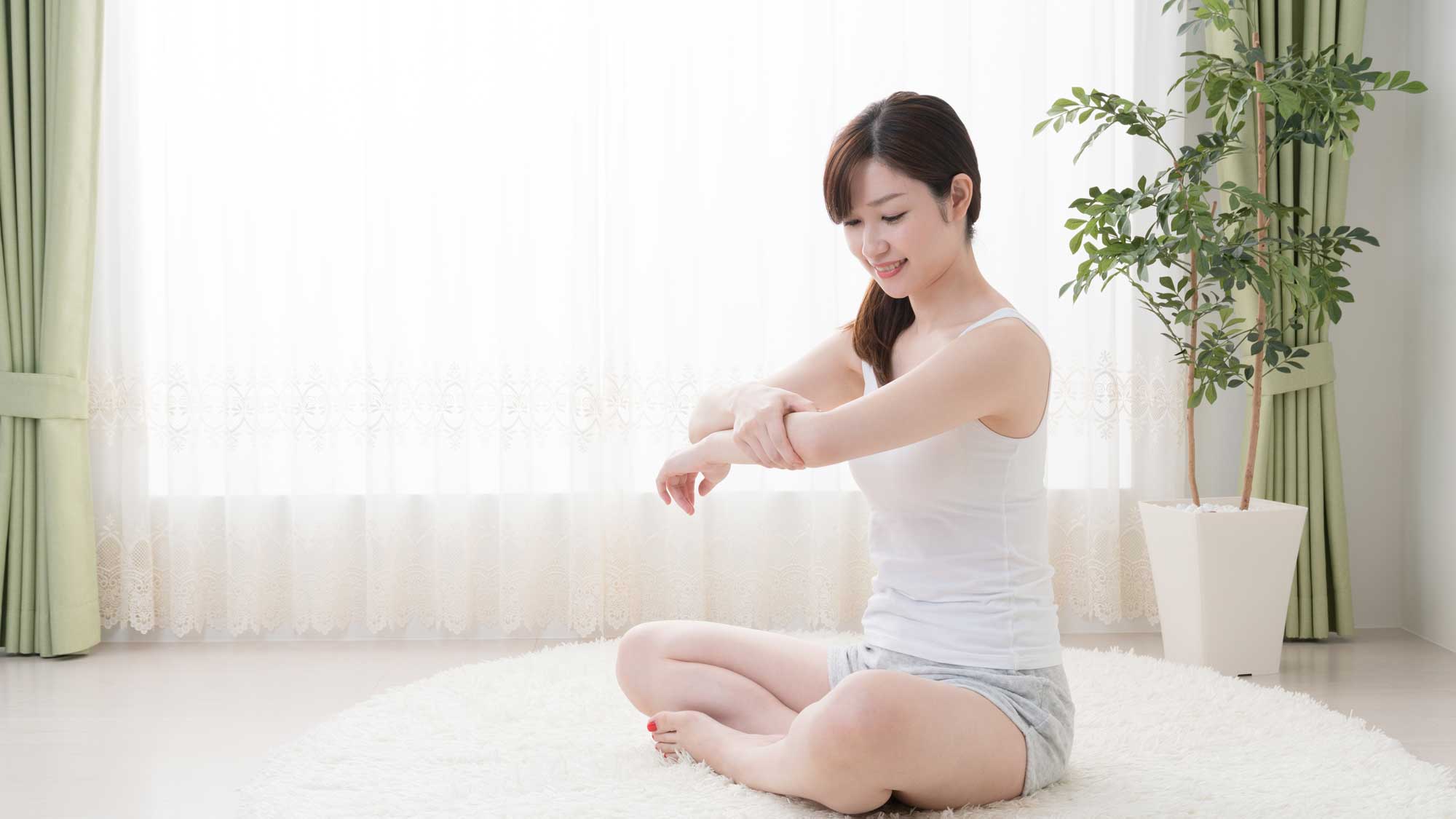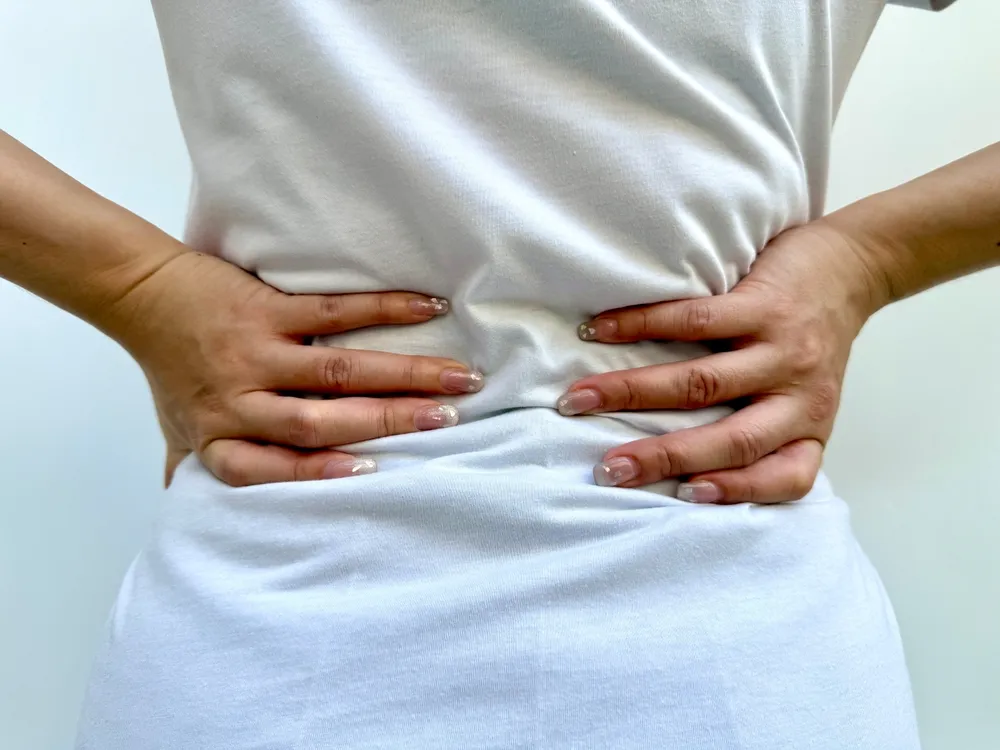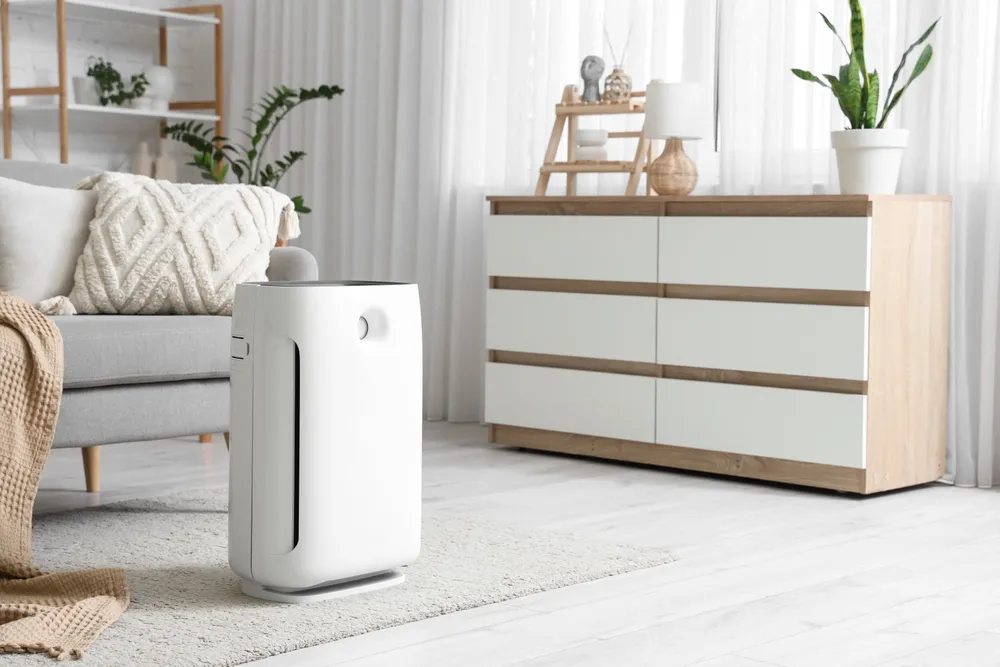[et_pb_section fb_built=”1″ _builder_version=”4.6.5″ _module_preset=”default” custom_padding=”0px||0px||true|false” hover_enabled=”0″ sticky_enabled=”0″][et_pb_row _builder_version=”4.6.5″ _module_preset=”default”][et_pb_column _builder_version=”4.6.5″ _module_preset=”default” type=”4_4″][et_pb_text _builder_version=”4.6.5″ _module_preset=”default” hover_enabled=”0″ sticky_enabled=”0″]
Do you deal with pain in your neck, shoulders, back, or other body parts? Do you wish you could get a massage every day to ease your pain, but don’t have the money?
If you answered yes to these questions, we’ve got some great news for you- there are plenty of self-massaging techniques that you can implement at home. And while performing a self-massage may not be as luxurious as heading to a spa, these techniques can certainly do the trick when it comes to alleviating pain.
So, how should you administer a self-massage?
Check out this guide to learn the best self-massage tips that’ll melt your pain away.
1. How to Self-Massage for Tension Headaches
Are you someone who suffers from tension headaches?
If so, you’re not alone. In fact, about 1 in 7 people in the UK suffer from migraines and headaches on a regular basis.
While there’s medicine you can take for tension headaches, self-massage can also help a great deal. Here’s what you need to do:
- Lie on your back with your legs bent
- Hold a tennis ball in each hand between your forefinger and thumb
- Place your hands behind your head so that the tennis balls are on either side of the base of your skull
- Alternate between moving your head up and down and side to side
By repeating this motion, you’ll be able to feel relief from your tension headache.
2. How to Self-Massage Your Feet
Are your legs aching because you’ve been walking around all day? If so, you need to give your feet a self-massage. Here’s how you do it:
- Sit on a chair with socked or bare feet
- Place a tennis ball under your foot and roll it back and forth from heel to toe with firm pressure
- If an area of your foot feels particularly tender, roll in small circles under those areas to work out the knots
The great part about this massage technique is that it can be performed under your desk without interrupting what you’re doing. You can use a regular tennis ball to perform this move, or you can use a small spiked massage ball.
3. How to Self-Massage for PMS
Do you suffer from premenstrual syndrome?
Luckily, there’s a self-massage technique you can implement to help alleviate your PMS symptoms. Here’s what you need to do:
- Lie on your back with your legs bent and plant your feet firmly on the ground
- Place two tennis balls underneath your lower back
- Raise and lower your hips, and as you lower them, knead your back into the tennis balls
Do this for several minutes, and you should notice a significant decrease in your PMS symptoms.
4. How to Self-Massage Your Jaw
When many people are stressed out, they clench their jaw. This can lead to both headaches and jaw pain. If you feel stress coming on, use this massage technique to relieve tension in your body:
- Press under your cheekbones with the pads of your fingertips, starting at the apples of your cheeks and working your way down
- As you press into your cheekbones, open and close your mouth
- When you reach the side of your face next to your ears (where your sideburns would be) press your thumb under your jawbone and then pull your fingertips down the side of your face
- Then, repeat the movement along your jaw and move toward your chin
- To finish, grab your chin and pull the skin down between your fingertips and thumbs
Doing this massage can be a great way to start your day, as it can help relieve anxiety.
5. How to Self-Massage Your Knees
Did you know that sitting too long may be causing 70,000 deaths per year in the UK? While sitting in and of itself is not bad, there are a lot of negative repercussions that come with not moving enough.
One of these repercussions is sore knees. Here’s what you can do to self-massage sore knees:
- Sit with your feet on the floor, and stretch out one leg, keeping the muscles in your quads soft
- Use your fingertip or knuckle to press into the area on your knee that hurts, massaging around the area for 10 seconds
- Bend and straighten your knee a couple of times
- Repeat a few times for each place that hurts on your knee
Doing this massage technique will help workout out built-up connective tissue that forms when your legs are bent for too long.
6. How to Self-Massage Your Butt
In addition to sore knees, many people also deal with sore butts from sitting all day. Here’s what you can do to self-massage your butt:
- Sit on the ground with your legs bent and your hands resting behind you
- Place your tennis ball under your butt cheek
- Lift your leg off the ground and roll your buttcheek around on the ball, working more intently into places where you feel the most tension
- Repeat on the other side
Doing this for a few minutes, and your bum should be feeling a lot better!
7. How to Self-Massage Your Arms
Are you suffering from sore forearms? Here’s what you can do to make your arms feel better:
- Extend your arm with your palm up and cup your elbow with your opposite hand
- Rotate your arm within your grip so that your palm faces down
- Repeat all the way down your arm until you reach your wrist
Just make sure to not squeeze too hard, as this will cause more pain.
Are You Ready to Self Massage?
Now that you’ve read this article, it’s time to put these self-massage tips into action. Before you know it, you’ll be pain-free!
Also, be sure to check out this guide to learn about the benefits of using a handheld massager at home.
[/et_pb_text][/et_pb_column][/et_pb_row][/et_pb_section]




